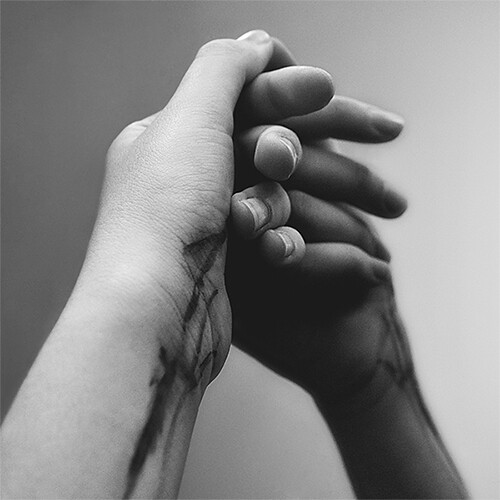Medicine is a discipline that claims to be based on empirical and scientific truth about human nature. Instead, its knowledge and practice are often steeped in biases like racism. For example, medicine was used in the nineteenth century to justify slavery due to the “biologically inherent superiority” of White races. Dr. Thomas Hamilton was a Southern physician in the nineteenth century who used torturous medical experiments on slaves in an attempt to prove false narratives on physiological differences between the skin of Black and White people. One of his experiments included blistering the skin of slaves to “prove” their skin was thicker. And the Tuskegee syphilis trials leave a long legacy of medical mistrust.
Many racial biases still exist and affect the care of people of color, especially Black patients. A 2016 survey found that about one-third of medical students and residents surveyed believed that Black people have thicker skin than their non-Hispanic White counterparts (NHWC). This pervasive and racist idea contributes to the inadequate pain management of Black patients and is sadly not the only myth that is still perpetuated in the realm of dermatology.
Dermatological health disparities have long been well-documented in people of color: non-white patients have higher rates of morbidity and mortality associated with dermatologic disease as compared to their NHWC. Additionally, under-recognition of erythema migrans in Lyme disease has resulted in increased rates of late manifestations in Black patients. Black children, based on race alone, are also less likely to see a medical provider for their eczema in the ambulatory setting. These disparities may have to do with the fact that representation of race and skin tone in medical textbooks are predominantly skewed towards White skin tones. As a result, inclusivity in dermatological education is long overdue. Given that dermatology is the second least diverse specialty in medicine, action should also be taken to reduce this educational disparity. Medical students themselves have already begun to advocate for this change.
The White Coats for Black Lives organization was created in 2014 in response to the non-indictment of officers responsible for the deaths of Michael Brown and Eric Garner. Medical students across the country have more recently flocked to social media, posting images of themselves with the hashtag #whitecoats4blacklives after the police murder of George Floyd. At the time of writing this piece, a petition advocating for medical schools to include Black and other minority representation in clinical teaching had amassed 189,120 signatures. Students are even taking to journal submissions, writing about their personal experiences with discriminatory medical education and recommending avenues for change. In an effort to decolonize medical education, one passionate Black medical student wrote a book called Mind The Gap, a handbook of clinical signs on Black and Brown skin. Through action, students have shown that they will no longer take part in discriminatory medical education that not only promotes systemic racism but also hinders their ability to be competent physicians.
One further solution is to increase exposure to pathology on Brown and Black skin amongst medical students, as this is proven to increase confidence in diagnosing a variety of dermatological diseases. In addition to diversifying images of dermatological pathologies in textbooks, the field can also diversify research to identify potential racial or ethnic disparities in the diagnosis and treatment of dermatologic diseases These changes are especially needed given that the projected growth rate of minority populations is increasing every year. The non-Caucasian US population could be approximately 48% by the year 2050. Many of us become physicians to help our communities; yet, only learning from textbooks often steeped in the racist legacy of medicine is insufficient. And so, medical education must change the curriculum to ensure proper representation of darker skin tones.
Other specialties have already distinguished themselves as leaders in health inequities. In fact, family medicine (FM) was born during the time of the Civil Rights movement and Vietnam War protests as part of the “countercultural” movement with social responsibility at its core. At the root of FM is the understanding that economic, social and cultural forces impact access to health care and that it is paramount to acknowledge these forces to provide health care for all people. As such, FM strives to continuously address the social determinants of health and reaffirm its unique position in influencing needed changes in health care. It is important for the field of dermatology to similarly emulate FM’s goal to alleviate health disparities because, as it currently stands, Dermatology only caters to a small population of primarily light-skinned individuals. With a more comprehensive education that includes Black and Brown skin, dermatology can further embrace the Hippocratic oath and appropriately treat all patients knowing that skin diseases may present differently on various skin tones.
Given the current political change in our nation and the more ubiquitous momentum behind the Black Lives Matter movement, dermatologic medical education should take this opportunity to reflect on its own implicit bias and include Black and Brown skin images in the teaching of dermatological conditions. Actively including more representation in dermatological textbooks is crucial to dismantling internalized racist beliefs that students already consciously or unconsciously hold and to increasing their awareness of how diseases can present on different skin tones. This is more than just a matter of diversity; it is a matter of providing equitable life-saving care.
Image credit: Anatomies (CC BY-NC-ND 2.0) by starsnostars

